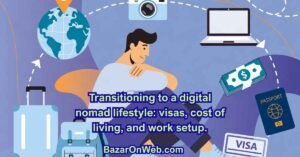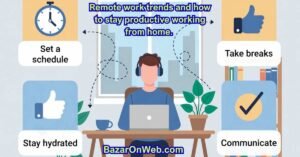Category
Popular Articles
- AI (9)
- Android (35)
- App Suggest (4)
- Apple (5)
- Apple TV (2)
- Bluetooth (2)
- Cars (2)
- ChatGpt (1)
- Did you know? (1)
- E-Commerce News (1)
- Ecommerce Websites business (7)
- Electronics Shopping (5)
- Fashion Tips (3)
- Gaming (3)
- Google Gemini (3)
- Hair Care Tips (2)
- How to (13)
- iCloud (1)
- Infotainment System (1)
- Iphone (93)
- Job Posting (1)
- Lifestyle (2)
- Mac (18)
- Mobile Games (1)
- Netflix (1)
- Online Shopping Websites (2)
- Personal Finance Management (3)
- Product Reviews (3)
- Roku TV (4)
- Samsung (7)
- Shopping Tips (10)
- Tech (62)
- Windows 11 (4)
- Zero Waste (3)
Discounted Products
-
 Leo Creation 144 TC Cotton Double Jaipuri Prints Flat Bedsheet(Pack of 1, Blue, Gree, Red, Grey, Light Grey)
Leo Creation 144 TC Cotton Double Jaipuri Prints Flat Bedsheet(Pack of 1, Blue, Gree, Red, Grey, Light Grey)
₹2,999.00Original price was: ₹2,999.00.₹329.00Current price is: ₹329.00. -
 Home Garage 210 TC Cotton King Floral Fitted (Elastic) Bedsheet(Pack of 1, Grey)
Home Garage 210 TC Cotton King Floral Fitted (Elastic) Bedsheet(Pack of 1, Grey)
₹999.00Original price was: ₹999.00.₹299.00Current price is: ₹299.00. -
 Goodrik 140 TC Cotton Double 3D Printed Flat Bedsheet(Pack of 1, Brown)
Goodrik 140 TC Cotton Double 3D Printed Flat Bedsheet(Pack of 1, Brown)
₹499.00Original price was: ₹499.00.₹229.00Current price is: ₹229.00. -
 GLOBALSHOP 350 TC Microfiber Double Floral Flat Bedsheet(Pack of 1, Multicolor)
GLOBALSHOP 350 TC Microfiber Double Floral Flat Bedsheet(Pack of 1, Multicolor)
₹1,250.00Original price was: ₹1,250.00.₹263.00Current price is: ₹263.00. -
 RisingStar 250 TC Microfiber King Printed Fitted (Elastic) Bedsheet(Pack of 1, FITTED-ROUND-CIRCLES-PREMIUM)
RisingStar 250 TC Microfiber King Printed Fitted (Elastic) Bedsheet(Pack of 1, FITTED-ROUND-CIRCLES-PREMIUM)
₹2,299.00Original price was: ₹2,299.00.₹299.00Current price is: ₹299.00. -
 Home Garage 210 TC Cotton King Floral Fitted (Elastic) Bedsheet(Pack of 1, Fitted Black Green)
Home Garage 210 TC Cotton King Floral Fitted (Elastic) Bedsheet(Pack of 1, Fitted Black Green)
₹1,299.00Original price was: ₹1,299.00.₹299.00Current price is: ₹299.00. -
 Home Garage 180 TC Cotton King 3D Printed Flat Bedsheet(Pack of 1, White)
Home Garage 180 TC Cotton King 3D Printed Flat Bedsheet(Pack of 1, White)
₹999.00Original price was: ₹999.00.₹229.00Current price is: ₹229.00. -
 Home Sizzler 153 cm (5 ft) Polyester Room Darkening Window Curtain (Pack Of 2)(Floral, Maroon)
Home Sizzler 153 cm (5 ft) Polyester Room Darkening Window Curtain (Pack Of 2)(Floral, Maroon)
₹799.00Original price was: ₹799.00.₹299.00Current price is: ₹299.00. -
 Panipat Textile Hub 152.4 cm (5 ft) Polyester Window Curtain (Pack Of 2)(Solid, Aqua)
Panipat Textile Hub 152.4 cm (5 ft) Polyester Window Curtain (Pack Of 2)(Solid, Aqua)
₹1,899.00Original price was: ₹1,899.00.₹299.00Current price is: ₹299.00. -
 Home Sizzler 214 cm (7 ft) Polyester Semi Transparent Door Curtain (Pack Of 2)(Floral, Maroon)
Home Sizzler 214 cm (7 ft) Polyester Semi Transparent Door Curtain (Pack Of 2)(Floral, Maroon)
₹1,199.00Original price was: ₹1,199.00.₹399.00Current price is: ₹399.00. -
 Home Sizzler 153 cm (5 ft) Polyester Room Darkening Window Curtain (Pack Of 2)(Floral, Brown)
Home Sizzler 153 cm (5 ft) Polyester Room Darkening Window Curtain (Pack Of 2)(Floral, Brown)
₹799.00Original price was: ₹799.00.₹299.00Current price is: ₹299.00. -
 Stella Creations 214 cm (7 ft) Polyester Room Darkening Door Curtain (Pack Of 2)(Abstract, Brown)
Stella Creations 214 cm (7 ft) Polyester Room Darkening Door Curtain (Pack Of 2)(Abstract, Brown)
₹1,299.00Original price was: ₹1,299.00.₹449.00Current price is: ₹449.00. -
 Homefab India 152.5 cm (5 ft) Polyester Room Darkening Window Curtain (Pack Of 2)(Floral, Light Blue)
Homefab India 152.5 cm (5 ft) Polyester Room Darkening Window Curtain (Pack Of 2)(Floral, Light Blue)
₹1,199.00Original price was: ₹1,199.00.₹319.00Current price is: ₹319.00. -
 Urban Home 214 cm (7 ft) PVC Transparent Door Curtain Single Curtain(Solid, Off White)
Urban Home 214 cm (7 ft) PVC Transparent Door Curtain Single Curtain(Solid, Off White)
₹699.00Original price was: ₹699.00.₹203.00Current price is: ₹203.00. -
 Panipat Textile Hub 213 cm (7 ft) Polyester Door Curtain (Pack Of 2)(Solid, Brown)
Panipat Textile Hub 213 cm (7 ft) Polyester Door Curtain (Pack Of 2)(Solid, Brown)
₹1,199.00Original price was: ₹1,199.00.₹349.00Current price is: ₹349.00.
Affiliate Links
Promotion

Section 1: Understanding the Digital Nomad Shift & Preparing for Mobility
The rise of the digital nomad lifestyle in the U.S. isn’t just a cultural trend—it’s the result of deeper shifts in work expectations, technology, and personal values. For many professionals, the appeal is clear: more freedom, broader cultural experiences, and the ability to design a work life that aligns with personal well-being. But before anyone jumps into a new country with a laptop and dream, there’s a critical first phase—understanding what this lifestyle really requires and preparing for the complexities behind the scenes.
In this first section, I want to walk you through the mindset, logistics, and foundational research you need to begin transitioning successfully. Because becoming a digital nomad isn’t only about moving locations—it’s about reinventing how you work, how you spend, and how you plan your life.
The Digital Nomad Mindset: More Than Travel, It’s Intentional Living
A lot of people romanticize digital nomadism as constant travel, beachside work sessions, and endless adventure. And while some of that can be true, it’s actually much more of an intentional lifestyle choice centered around mobility, flexibility, and design thinking.
The modern nomad thinks strategically about:
- Income stability: ensuring consistent cash flow regardless of timezone.
- Minimalism: keeping life lightweight—physically and financially.
- Adaptability: adjusting to different internet speeds, currencies, and environments.
- Self-accountability: staying productive without a structured office.
- Cultural respect: learning to engage with new communities thoughtfully.
This mindset shift alone takes time. Because once you leave a familiar routine—commutes, offices, physically present teams—you rely entirely on your systems, habits, and foresight. You’re building your own operating manual.
Step 1: Audit Your Job and Income Stream
Before you pack or browse flights, you need complete clarity on how your work fits into a nomadic structure.
Can your job go fully remote?
Ask yourself:
- Does your work require physical presence?
- Does your employer already support remote structures?
- Can your meetings fit within international time zones?
- Are there data security considerations that restrict travel?
If your company has flexible or hybrid policies, you may need formal approval for extended remote work—some employers have internal guidelines for out-of-state or international work due to tax and compliance regulations.
If you’re freelance or self-employed
Digital nomadism becomes easier because:
- You can choose clients across the globe
- Your work isn’t tied to a fixed time zone
- You have more control over rates, workload, and schedules
But the flip side is self-reliance: you need savings, emergency funds, health insurance, and strong financial organization to avoid destabilizing your income while abroad.
Step 2: Build a Location-Independent Financial System
A smooth transition requires restructuring your financial life so it works wherever you are.
What this typically includes:
- Online banking with global ATM access
- Low-fee international debit/credit cards
- A budgeting app that tracks spending in multiple currencies
- Emergency savings (minimum 3–6 months of expenses)
- A backup income source (even a small one)
Many new nomads underestimate the financial complexity of fluctuating currencies, unexpected travel costs, and health emergencies. Financial preparation gives you mobility without fear.
Taxes: Don’t skip this part
U.S. citizens still owe taxes—even while living abroad. You may also qualify for programs like the Foreign Earned Income Exclusion (FEIE), but only if you meet specific criteria.
This is where many nomads make costly mistakes. A quick consultation with a tax professional can save you thousands later.
Step 3: Start Slow With a Trial Trip (Highly Recommended)
Before committing to a year abroad, consider a 4–8 week trial stay in a nearby digital-nomad-friendly city such as:
- Austin, Texas
- Miami, Florida
- Montreal, Canada
- Mexico City
- Lisbon
A trial run tests your:
- Time zone productivity
- Internet needs
- Work rhythm
- Comfort level with mobility
- Daily budget
- Ability to stay disciplined
Think of it as a “soft launch” into nomad life—less risk, more learning.
Step 4: Research Digital Nomad Visas (Before You Choose a Country)
Different countries now offer visas designed specifically for remote workers. Before you decide where to live, research each country’s:
- Visa requirements (income thresholds, insurance, documents)
- Length of stay allowed
- Tax obligations
- Processing times
- Cost of living in the city you plan to settle in
Some of the most popular countries offering digital nomad visas include:
- Portugal
- Spain
- Estonia
- Croatia
- Japan (new remote work program)
- Costa Rica
- Mexico (temporary resident visa)
You’ll compare these in depth in Section 2, but for now: start a spreadsheet. It will become your most helpful planning tool.
Step 5: Build a Portable Work Setup Before You Leave
Many nomads assume they can figure out their workspace once they land somewhere new. But your tools and habits need to be established in advance.
A portable, professional digital setup usually includes:
- A lightweight but powerful laptop
- A compact external keyboard or mouse
- A foldable laptop stand
- Noise-canceling headphones (lifesaver for cafes)
- A high-capacity power bank
- International adapters
- Cloud storage backups
- A reliable VPN (essential for security)
This setup lets you work seamlessly from an Airbnb, coworking space, airport lounge, train, or café without feeling unprepared.
Step 6: Build a Support Network Before You Go
Digital nomadism can be exciting—but also lonely and disorienting. Connecting with others makes the transition much smoother.
Join online communities such as:
- Digital Nomad Reddit groups
- Facebook communities for U.S. nomads in specific countries
- Slack groups for remote professionals
- Coworking community networks
- Instagram travel/remote work creators
These communities help you:
- Find housing
- Avoid scams
- Connect with people
- Learn from others’ experiences
- Build a sense of home wherever you go
A strong community is one of the biggest factors in long-term nomad sustainability.
Below is Section 2 (~800 words) of the article in Jessica’s professional, friendly voice.
Section 2: Digital Nomad Visas & Real Cost-of-Living Comparisons
Once you understand the mindset and preparation needed for digital nomad life, the next big step is choosing where to go. And this is where many U.S. remote workers get most overwhelmed—every country has its own visa rules, income requirements, and financial realities.
This section breaks down two pillars of a successful transition:
- Which digital nomad visas are actually worth considering
- How much life really costs in top nomad destinations
Because thriving as a digital nomad isn’t just about picking the most beautiful country—it’s about picking the one that aligns with your budget, work rhythm, and long-term stability.
Understanding Digital Nomad Visas (DNVs): What They Actually Mean
Digital nomad visas are official programs that let remote workers legally stay and work in another country without qualifying as local employees. They’re designed for people earning from foreign companies or clients, which is ideal for U.S.-based remote workers.
But here’s what many people don’t realize:
Not all “nomad visas” are equal. Some are simple and affordable. Some require hefty income proof. Others have tax benefits. And a few have hidden complexities you won’t discover until you’re already knee-deep in paperwork.
Let’s break down the most realistic options for American professionals in 2026.
Top Digital Nomad Visa Options for U.S. Remote Workers
Below are some of the most popular—and practical—destinations, including who they’re ideal for.
1. Portugal: The Gold Standard for Nomads
Why it’s popular:
Portugal consistently ranks as one of the best digital-nomad destinations thanks to its warm climate, strong English-speaking population, and affordable living.
Visa options:
- D8 Digital Nomad Visa (requires stable remote work income)
- D7 Visa (for passive income—not ideal for active workers)
Income requirement:
~$3,200/month (changes annually)
Pros:
- Affordable health insurance
- Friendly expat communities
- Great public transportation
- Lisbon, Porto, and Madeira are digital-nomad hubs
Cons:
- Long visa processing times
- Rental prices in Lisbon can be high
Ideal for: First-time nomads who want stability and great infrastructure.
2. Spain: Beautiful, Social, and Postcard Living
Spain’s Digital Nomad Visa is newer but extremely attractive for remote workers who want culture, warmth, and lifestyle-focused living.
Income requirement:
~$2,700/month
Pros:
- Lower cost of living outside big cities
- Excellent healthcare
- Low-cost SIM and internet
- Amazing food and culture
Cons:
- Taxes can be more complex
- Bureaucracy can be slow
Ideal for: Nomads who want European charm with modern amenities.
3. Croatia: Coastal Living at Reasonable Prices
Croatia exploded in popularity thanks to its beautiful Adriatic coastline, medieval towns, and beginner-friendly nomad visa.
Income requirement:
~$2,700/month
Pros:
- One of Europe’s most affordable coastal locations
- Strong community of digital nomads
- Non-Schengen (useful for visa resets)
Cons:
- Slower off-season lifestyle
- Internet quality varies outside major cities
Ideal for: Nomads who want scenery and small-city calm.
4. Japan: The New Remote Work Program
Japan recently opened its doors with a pathway for remote professionals from countries like the U.S.
Income requirement:
High — targeting mid- to high-income earners
Pros:
- Extremely safe
- World-class infrastructure
- Tech-friendly
- Endless cultural experiences
Cons:
- Higher cost of living
- Smaller housing spaces
- Can be overwhelming for first-time nomads
Ideal for: Highly paid tech/creative workers who value structure and culture.
5. Mexico: Accessible, Affordable, and Perfect for U.S. Time Zones
Mexico remains a top choice for American nomads due to its proximity and affordability.
Visa option:
Temporary Resident Visa
(Up to 4 years; income requirements vary and may include savings proof)
Pros:
- Easy flights home
- Lower living costs
- Great food and culture
- Popular hubs like Mexico City, Playa del Carmen, Mérida
Cons:
- Tourist areas can be expensive
- Safety varies by region
Ideal for: Professionals who want affordability + easy U.S. time-zone alignment.
Cost-of-Living Comparisons: What You’ll Actually Spend Monthly
One of the biggest shocks new nomads face is the difference between “travel budget” and “living budget.” Let’s break it down realistically.
Below are average monthly estimates for a comfortable digital nomad lifestyle (not luxury, not backpacker level) in 2026.
Portugal (Lisbon)
- Rent (1-bedroom): $1,200–$1,800
- Groceries: $250–$350
- Eating out: $200–$350
- Workspace: $150
- Transport: $50
- Phone/internet: $30
Total: ~$2,000–$2,600/month
Spain (Valencia/Seville)
- Rent: $900–$1,400
- Groceries: $250
- Eating out: $220
- Workspace: $130
- Transport: $40
- Phone/internet: $25
Total: ~$1,700–$2,200/month
Croatia (Split)
- Rent: $600–$1,000
- Groceries: $200–$300
- Eating out: $180–$250
- Workspace: $120
- Transport: $40
- Phone: $20
Total: ~$1,200–$1,800/month
Japan (Tokyo)
- Rent: $1,200–$2,000
- Groceries: $350–$450
- Eating out: $300
- Workspace: $200
- Transport: $120
- Phone: $35
Total: ~$2,200–$3,200/month
Mexico (Mexico City)
- Rent: $700–$1,200
- Groceries: $180–$280
- Eating out: $200–$320
- Workspace: $120
- Transport: $20
- Phone: $15
Total: ~$1,300–$2,000/month
How to Choose the Right Country (Decision Factors That Matter)
When evaluating your top three choices, focus on:
1. Time Zone Alignment
Eastern Europe is great for overlapping with U.S. mornings. Asia requires night work—which some people love, and others hate.
2. Income-to-Cost Ratio
Your salary may stretch twice as far in Croatia or Mexico compared to Japan.
3. Community + Safety
Research expat neighborhoods, coworking reviews, Reddit experiences, and safety ratings.
4. Visa Processing Time
Some countries approve visas in weeks; others take months.
5. Work Infrastructure
Coworking spaces, internet speed, laptop repair shops, and electric reliability vary widely.
6. Long-Term Sustainability
Don’t choose a destination based only on travel hype. Choose one that fits your lifestyle patterns.
Section 3: Building Your Ideal Work Setup, Daily Routine & Sustainable Nomad Life
Once your destination and visa path are chosen, the heart of digital nomad life begins: building a smooth, productive, and stress-free work setup anywhere in the world. This is where many remote workers either thrive—or burn out. The truth is, being a digital nomad isn’t just changing your location; it’s changing the rhythm of your days, the tools you depend on, and the environment that supports your focus and well-being.
In this section, I’ll break down three key pillars that help digital nomads succeed long-term:
- Setting up your workspace anywhere
- Creating a flexible, healthy daily routine
- Managing long-term sustainability and avoiding burnout
These three areas determine whether your new lifestyle becomes empowering… or exhausting.
Your Portable Office: A Remote Setup That Works Anywhere
The most productive digital nomads don’t rely on luck—they rely on systems.
Here’s what that means in real life:
1. Reliable Tech Essentials
Your hardware is your livelihood. A small failure can derail your income, so every item deserves careful thought.
Must-haves for 2026 nomads:
- A lightweight laptop with long battery life
- Noise-canceling headphones
- Portable laptop stand + Bluetooth keyboard/mouse
- USB-C universal charger
- International plug adapters
- A backup power bank (30,000 mAh)
- An encrypted SSD for secure file storage
You don’t need a suitcase full of gadgets—just tools that protect your productivity no matter where you land.
2. Internet is Your Oxygen
Work-from-anywhere actually means work-from-anywhere-with-solid-Wi-Fi.
Always verify:
- Coworking speed tests
- Airbnb Wi-Fi screenshots
- Reviews that mention connectivity
- Access to cafes with fiber
Many nomads also carry:
- A global eSIM (Airalo, Holafly, Nomad)
- A portable hotspot for emergencies
These small decisions prevent last-minute panic before client calls.
3. Coworking Spaces vs. Cafés vs. Home Setups
Each has different pros:
Coworking Spaces
- Reliable Wi-Fi
- Ergonomic chairs
- Meeting rooms
- Community networking
Great for productivity and structure.
Cafés
- Creative energy
- Affordable
- Easy to rotate locations
Better for light tasks.
Home Setups
- Ideal for mornings
- No commute
- Can design the space your way
Perfect for deep work sessions.
Rotating between the three gives you freshness and consistency.
Your Daily Routine: Structure Without Losing Freedom
Many Americans imagine digital nomads sipping coconut water on a beach while casually typing emails. Real nomads know beaches + laptops = glare, sand, heat, and terrible Wi-Fi.
Successful nomad routines are flexible but disciplined.
1. Build a Time-Block Framework
The best schedule depends on your destination’s time zone relative to the U.S.
For example:
- Europe: You’ll work U.S. afternoons → evenings.
- Asia: You’ll work late nights.
- Latin America: Almost perfect alignment.
Regardless of location, effective nomads use a structure like this:
Morning
- Movement (jogging, stretching, walking)
- Email triage
- Deep work session: creative tasks
Afternoon
- Meetings (U.S. overlap hours)
- Client communication
- Collaborative work
Evening
- Errands, grocery runs, exploring
- Social time
- Personal projects
It’s not about strictness; it’s about balance.
2. Avoid the “Work All Day Because You’re Abroad” Trap
Many nomads accidentally blur the line between work and exploration.
Signs you’re slipping:
- You’re sightseeing with your laptop in your backpack
- You work “a little more” every evening
- You feel guilty anytime you’re not working
- You haven’t had a real day off in weeks
Set non-negotiables:
- Two days off weekly
- A real lunch break
- No laptop after a set time
This lifestyle is about expanding your world, not shrinking your energy.
3. Maintain Your Health and Well-being
Nomad life disrupts routines—meal planning, gym access, and sleep can all shift.
The system that works best:
- Join a local gym or yoga studio within week one
- Shop groceries instead of eating out daily
- Use health apps to track sleep, hydration, and steps
- Keep your U.S. health insurance or global travel medical coverage
Well-being is foundational—not optional.
Long-Term Sustainability: Avoiding Burnout and Building Stability
Digital nomad life is exciting at first, but sustaining it long-term requires intentional planning and emotional awareness.
Let’s break down what helps nomads stay grounded.
1. Financial Sustainability
Don’t fall into the feast-or-famine cycle.
Maintain:
- A 6–12 month emergency fund
- Automated saving and investing
- Income diversification
- Budgeting based on local costs, not U.S. costs
When your finances are stable, your experience becomes ten times more enjoyable.
2. Emotional Sustainability
Travel fatigue is real. Every move requires:
- Finding housing
- Learning transit routes
- Navigating new languages
- Adjusting your sleep schedule
- Rebuilding your routine
Plan slower travel:
- 1–3 months per country
- Minimal border runs
- Intentional “quiet weeks” with low social activity
Slow nomads stay happier and healthier.
3. Building Community
Many nomads report loneliness in their first year.
Ways to build real connections:
- Join coworking events
- Attend local expat meetups
- Volunteer
- Take group classes
- Connect with fellow nomads online
Community can turn a country into a temporary home.
4. Creating a Personal Philosophy of Travel
Everyone travels differently.
Ask yourself:
- Do you want to stay in one region or explore many?
- Do you prefer small coastal towns or large cities?
- Do you value nightlife or quiet evenings?
- Are you seeking career growth, adventure, or a lifestyle reset?
Your answers shape your experience more than any visa.
Conclusion
Transitioning into a digital nomad lifestyle isn’t just a travel decision—it’s a full transformation of how you work, live, and experience the world. It requires courage, planning, discipline, and a willingness to reshape old habits into a more flexible, intentional routine. But for many U.S. professionals, especially those familiar with remote work culture, this lifestyle opens up a new sense of freedom and empowerment.
Whether you’re comparing digital nomad visas, evaluating the real cost of living across continents, or building a portable work setup that supports your productivity from one country to the next, the key is to design your journey intentionally. You don’t need to chase every trending destination or live out of a backpack indefinitely. You simply need to choose places and habits that fit your values—your budget, your preferred work rhythm, your love for culture, nature, or community.
A sustainable nomad lifestyle isn’t about nonstop travel; it’s about balancing exploration with emotional and financial stability. It’s about finding environments that inspire you, routines that support your well-being, and opportunities that push you to grow professionally and personally.
With the right planning, the digital nomad path can be one of the most rewarding chapters of your life—expanding your world, your connections, and your perspective. And if you approach it with clarity and intention, it becomes more than a lifestyle trend—it becomes a sustainable way to live and work on your terms.
Written by Bazaronweb
Latest Tech Articles
- Ranking 10 Major Graphics Card Brands

- Transitioning to a digital nomad lifestyle: visas, cost of living, and work setup.

- Remote work trends and how to stay productive working from home

- Retirement Planning for Younger Professionals in the U.S.: Roth IRAs, ESG Funds, and More.

- Budgeting in 2026: high inflation, investing, and building savings.

Products
-
![Apple Watch Ultra 3 [GPS + Cellular 49mm] Running & Multisport Smartwatch w/Rugged Titanium Case w/Black Titanium Milanese Loop - M. Satellite Communications, Advanced Health & Fitness Tracking](https://bazaronweb.com/retailstores/wp-content/uploads/2025/09/apple-watch-320x320.jpg) Apple Watch Ultra 3 [GPS + Cellular 49mm] Running & Multisport Smartwatch w/Rugged Titanium Case w/Black Titanium Milanese Loop - M. Satellite Communications, Advanced Health & Fitness Tracking
Apple Watch Ultra 3 [GPS + Cellular 49mm] Running & Multisport Smartwatch w/Rugged Titanium Case w/Black Titanium Milanese Loop - M. Satellite Communications, Advanced Health & Fitness Tracking
-
 Apple iPad mini (A17 Pro): Apple Intelligence, 8.3-inch Liquid Retina Display, 256GB, Wi-Fi 6E, 12MP Front/12MP Back Camera, Touch ID, All-Day Battery Life — Purple
Apple iPad mini (A17 Pro): Apple Intelligence, 8.3-inch Liquid Retina Display, 256GB, Wi-Fi 6E, 12MP Front/12MP Back Camera, Touch ID, All-Day Battery Life — Purple
-
 Apple AirPods Max Wireless Over-Ear Headphones, Active Noise Cancelling, Transparency Mode, Personalized Spatial Audio, Dolby Atmos, Bluetooth Headphones for iPhone – Space Gray
Apple AirPods Max Wireless Over-Ear Headphones, Active Noise Cancelling, Transparency Mode, Personalized Spatial Audio, Dolby Atmos, Bluetooth Headphones for iPhone – Space Gray
-
 Apple AirPods Pro 2 Wireless Earbuds, Active Noise Cancellation, Hearing Aid Feature, Bluetooth Headphones, Transparency, Personalized Spatial Audio, High-Fidelity Sound, H2 Chip, USB-C Charging
Apple AirPods Pro 2 Wireless Earbuds, Active Noise Cancellation, Hearing Aid Feature, Bluetooth Headphones, Transparency, Personalized Spatial Audio, High-Fidelity Sound, H2 Chip, USB-C Charging
-
 Leo Creation 144 TC Cotton Double Jaipuri Prints Flat Bedsheet(Pack of 1, Blue, Gree, Red, Grey, Light Grey)
Leo Creation 144 TC Cotton Double Jaipuri Prints Flat Bedsheet(Pack of 1, Blue, Gree, Red, Grey, Light Grey)
₹2,999.00Original price was: ₹2,999.00.₹329.00Current price is: ₹329.00.
Leave a Reply